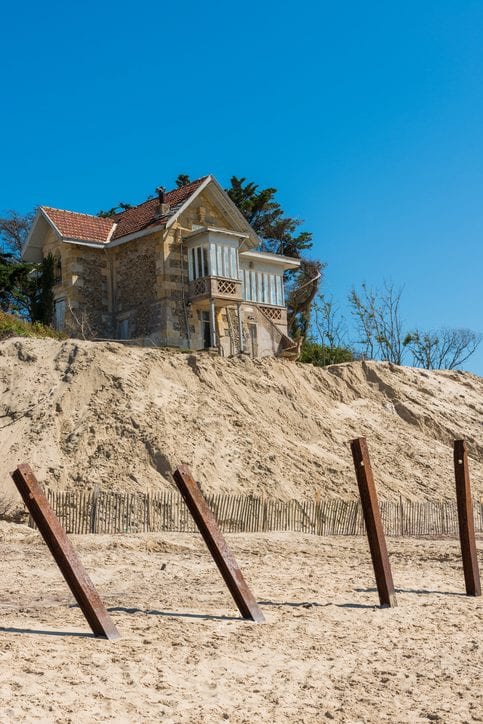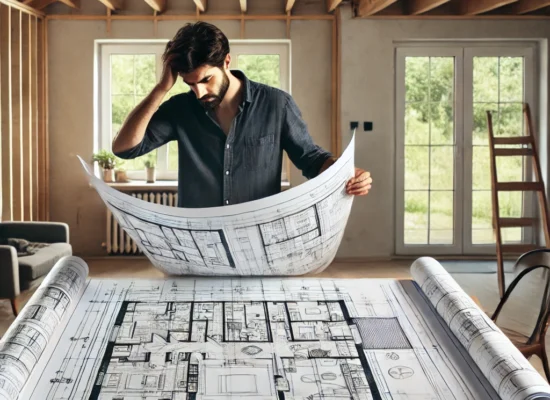- Do I Need an Erosion and Sediment Control Plan?
- Tips to Help You Develop Your Erosion and Sediment Control Plan
- How Erosion And Sediment Control Plan Affects The Building
Recently the Department of Permitting and Planning developed new regulations requiring Erosion and Sediment Control Plan for people doing construction on their property. This includes people who want to:
- Build a home
- Create a home addition
- Develop a retaining wall
- Grade their land
- Install a driveway or sidewalk
- Install an in ground pool
This is just a partial list of the jobs that must have an Erosion and Sediment Control Plan. If you plan to do any type of work that “disrupts” the land in any way, you must submit the appropriate paperwork. You may be aware of the regulations but be wondering how to go about tackling this task. We’ve developed tips to help you navigate the paperwork.
Determine what type of project you have
The Department of Permitting and Planning separates projects into either category 1A or category 1B. Each category has slightly different paperwork. Here are the main differences between 1A and 1B.
Category 1A:
- Non-commercial construction job that disturbs less than 1,000 square feet of land.
- The slope of construction cannot be more than 15 %.
Category 1B:
- Residential construction more than 1,000 square feet but not more than an acre.
- Residential construction that is less than 1,000 square feet but has a slope of more than 15%.
- Construction is for a commercial building under one acre.
To determine what category your construction falls within, you will need to measure the land you will disrupt and determine the slope (more information about how to do that in upcoming posts).
Develop a schedule
As part of the Erosion and Sediment Control Plan, you will need to submit a schedule detailing how long each step will take. In other words, you need to break the entire project down into smaller steps and estimate the amount of time it will take you to complete that task. A simple table with a column for the task and another for the time to complete will suffice.
Secure your checklist template
Download a checklist template for category 1A here or for category 1B here. It gives suggestions for minimizing the negative effects of disrupting the land. The checklist contains several categories with a list of potential solutions you can use for each one. For example, one category is titled, “Dust Control”. One of the suggested options to reduce the dust include: “Mulching to a one inch or more depth.” Once you have the checklist, use it as a guide to what precautionary measures to take.
Diagram the site
You also need to submit a diagram or map of the construction site. Using grid paper, sketch the construction site. Make sure your map shows the boundary surrounding the property as well as any other buildings on location. Storm drains must be included too. Use a wavy line with an arrow at the end in order to show which way the water flows. Finally, include the best management practices you will use such as a silt fence, vegetation, gravel, and so on. Display the best management practices (BMPs) with appropriate symbols.
Prepare to submit your control plan
Once you have all your documents ready, you may send them in with a $250 payment. This amount will cover one plan review. If you need multiple permits all related to the same job, you may submit it all as one so you don’t have to pay additional fees.
This mandatory paperwork may seem overwhelming at first, but we are here to help guide you through the process. Keep an eye open for our future posts. We will be posting about how to measure the slope of your property and more. Contact Owner Built Design, LLC for more information today!
 Copyright secured by Digiprove
Copyright secured by Digiprove 




2 thoughts on “Tips to Help You Develop Your Erosion and Sediment Control Plan”
I just wanted to thank you for these tips for an erosion control plan. I had no idea that you should submit a schedule that explains how long the project will take and the different steps involved. It definitely sounds important to make sure you understand how long each process will take so that you can make an accurate estimate.
My cousin has been thinking about getting some better erosion control for his backyard to prevent run-off. He would really like to get some help from a professional to make sure that there won’t be damage to the grass. I liked what you said about how they should include storm drains in the diagram or map of the construction site.